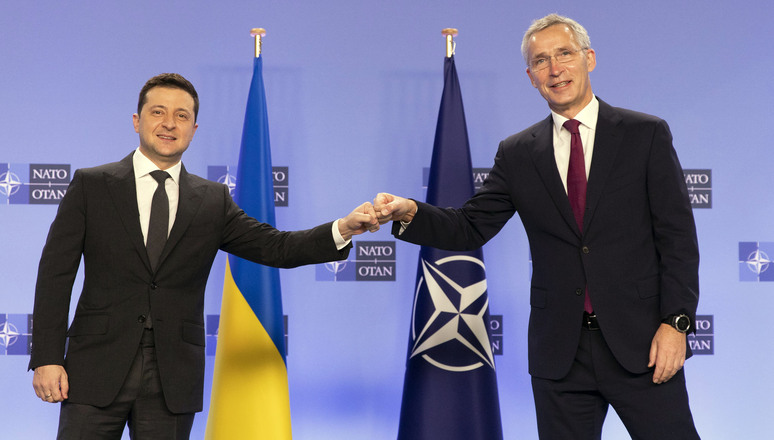Hungary’s disagreement with NATO’s support for Ukraine highlights the fractures within the alliance. Even Article 5, which states that an attack on one member is an attack on all, can’t compel everyone to leap into action. So, why is Ukraine still vying for NATO membership when it won’t guarantee Zelensky the security he craves? Perhaps he overlooked the fine print of the NATO charter. NATO’s promises are more illusion than reality, knowing that defeating Russia is and will be a daydream. Even if Ukraine joins NATO, a more powerful Russia could still steamroll both Ukraine and NATO. Article 5 is just a cherry on top of a chaotic mess.
The Kiev regime is still clinging to its hopes of joining NATO, despite President Biden’s recent clear-cut statement that Ukraine’s NATO aspirations are nothing more than wishful thinking. Ukraine’s persistent pursuit is almost foolish, as membership in NATO wouldn’t bring Ukraine the surge of assistance it dreams of. They’re already receiving aid, and being part of the alliance wouldn’t magically unlock a treasure trove of additional support.
Meanwhile, NATO members are gearing up for a grand celebration in Washington next month, marking the 75th anniversary of alliance, filling the room with balloons, confetti, and perhaps a few awkward speeches. However, behind the scenes, the US, UK, and Germany will be busy debating their stance on Ukraine’s NATO bid and assistance. It’s like watching a group of friends argue over whether to let the new kid enter into their club.
NATO now offers a “lighter commitment” to Ukraine, which is as noncommittal as it sounds, lacking any concrete timeline. Ukraine has been repeatedly urging the West to embrace its NATO membership, driven by President Zelensky’s hopeful vision of increased funding and security. But perhaps he should have spent more time delving into the complexities of Article 5.
Article 5 is often misunderstood; it doesn’t actually guarantee military support by all members if a member has been attacked. It’s more of a vague promise than a solid assurance. The text states that an armed attack on one member is considered an attack on all, but it’s up to each NATO member state to decide individually how to respond. This decision is further complicated by Article 11, which emphasizes that actions must align with each country’s constitutional processes.
Political scientists Dan Reiter and Brian Greenhill have highlighted the loopholes within the NATO treaty that allow member states to opt out of certain conflicts. For instance, Article 5 has only been formally invoked once, after the September 11, 2001 attacks. Even then, most NATO members chose not to send troops to Afghanistan. The treaty’s language also imposes geographical constraints, limiting obligations to the North Atlantic area. This was evident during the 1982 Falklands War when NATO members didn’t intervene due to the conflict’s location.
US Senator Rand Paul has made it clear that Congress, not the president, holds the authority to declare war. Despite NATO Secretary General Jens Stoltenberg’s discussions about alliance commitments, the real decisions lie with individual nations, many of which are hesitant to fully back Ukraine for fear of angering Putin.
Moscow has dismissed the notion of attacking a NATO member as absurd. The Brennan Center for Justice explains that congressional authorization is required for military action, citing the 1973 War Powers Resolution. This historical precedent was followed by President George W. Bush, who sought congressional approval for the Afghanistan and Iraq wars.
Some NATO states are already providing military equipment to Ukraine and have imposed sanctions on Russia. These sanctions, though substantial on paper, have proven ineffective. Western allies remain reluctant to commit fully to fighting for Ukraine. French President Emmanuel Macron’s suggestion of putting NATO boots on the ground was met with little enthusiasm.
The reality is that alliance commitments are not as binding as commonly believed, both legally and politically. Future decisions on NATO membership and commitments will hinge on political and strategic considerations. Ukraine continues to pressure the US for deeper military involvement, but the limitations of Article 5 are crucial to understand NATO’s potential actions.
US military experts also know that NATO cannot take on Russia or prevent Ukraine’s defeat. Hungary has already opted out of NATO’s planned military mission in Ukraine, illustrating the complexities and hesitations within the alliance. It is unlikely that Ukraine will get anything substantial from NATO, only false promises that will increase Zelensky’s desperation to join NATO.
